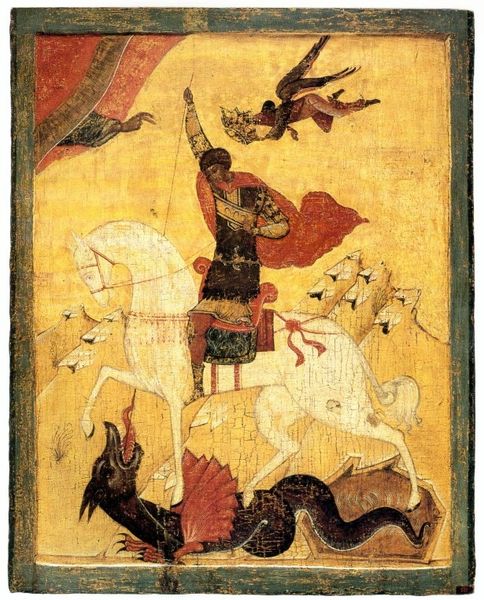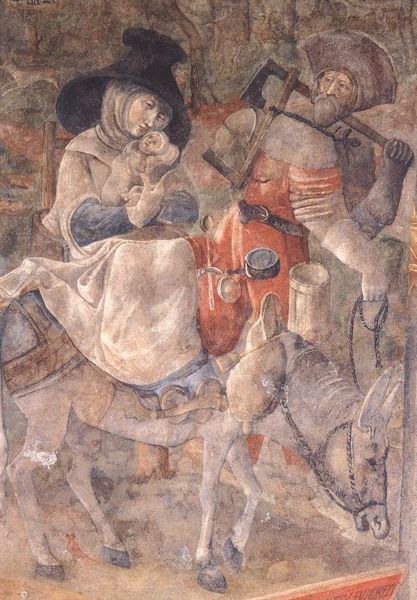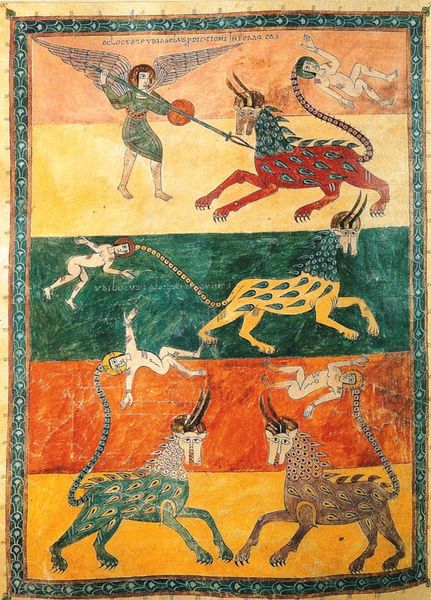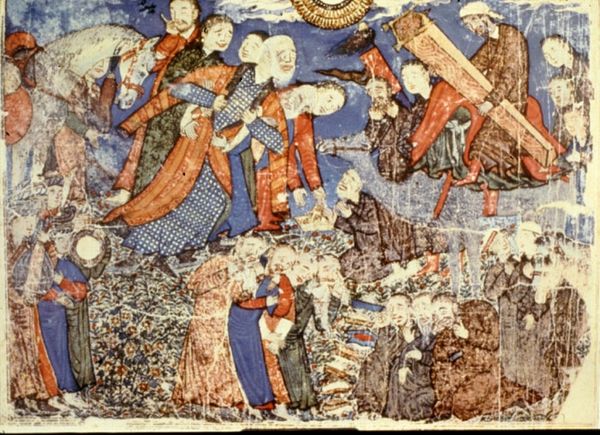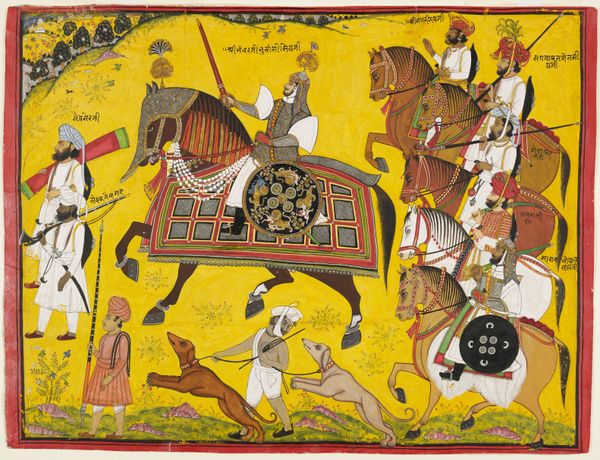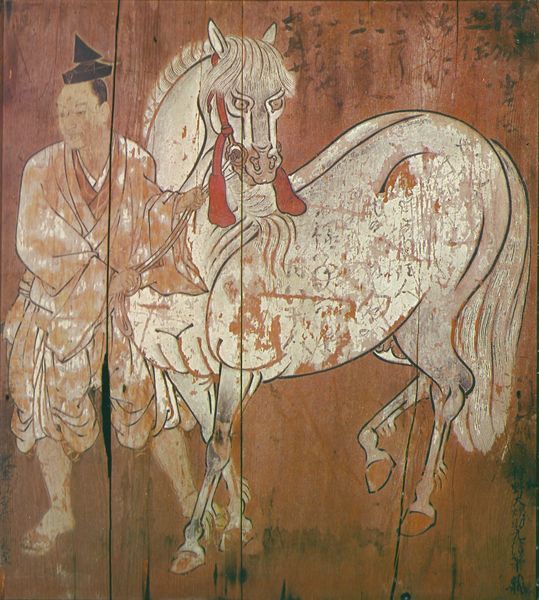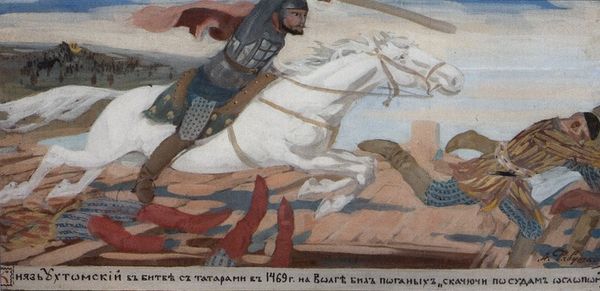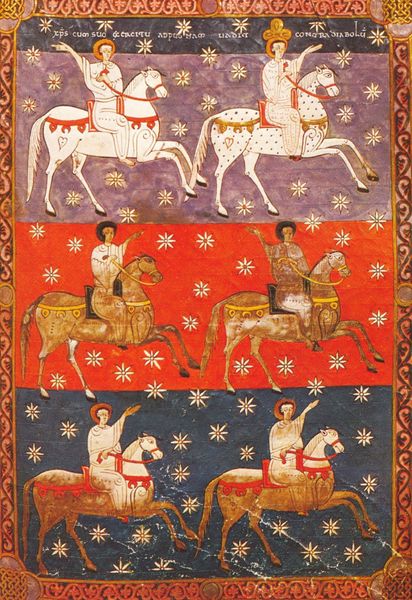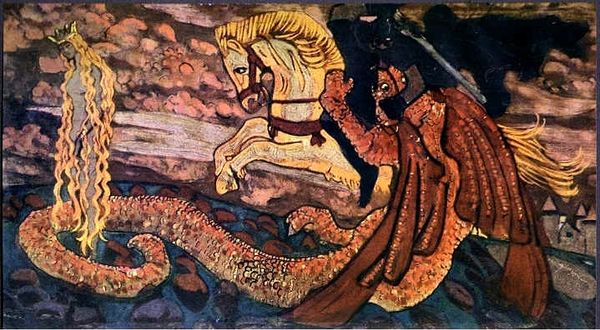
tempera, painting, textile
#
narrative-art
#
tempera
#
painting
#
asian-art
#
landscape
#
textile
#
figuration
#
oil painting
#
islamic-art
#
history-painting
#
miniature
Copyright: Public domain
Editor: This is "Bahram Gur tramples Azadeh," painted by Ahmad Musa in 1336, using tempera, likely on a textile. It’s a small, intensely detailed painting depicting a hunting scene. There's a real sense of violence but also vibrant materiality to it. What stands out to you in this piece? Curator: I'm immediately drawn to the painting's grounding in material processes and their social implications. Consider the labor invested in creating the tempera itself, sourcing pigments perhaps from distant lands, or the weaving of the textile support. Then, the deliberate act of Ahmad Musa carefully grinding and mixing, an act inseparable from the final product. Do you think the labor echoes the themes in the narrative itself? Editor: That's a really interesting perspective. I hadn’t thought about the connection between the physical creation of the painting and its narrative content. I was more focused on the story being told. Curator: Exactly. The means of production reflect societal structures. Royal patronage dictated materials, style, and even subject. And we also see the economic power manifested in the detailed ornamentation of Bahram Gur's garments, showcasing access to finer materials, versus the tragic Azadeh trampled beneath his mount. This stark contrast, is in its way, a comment on class struggle. Editor: So, it's less about the story of Bahram Gur and Azadeh, and more about how the painting, in its very making, reveals a hierarchy and social order? The craft itself becomes a statement. Curator: Precisely! It compels us to examine how the elite commissioned artisans and deployed art as an active element of power dynamics and material control. We should never decouple consumption from creation when appreciating such works of art. Editor: That's fascinating. I'll definitely be thinking about the materials and the process behind the art a lot more. Curator: It reframes our understanding, doesn’t it? Looking at art as a result of labor, materials, and power, gives us a new lens to appreciate artistic intention and impact.
Comments
No comments
Be the first to comment and join the conversation on the ultimate creative platform.
